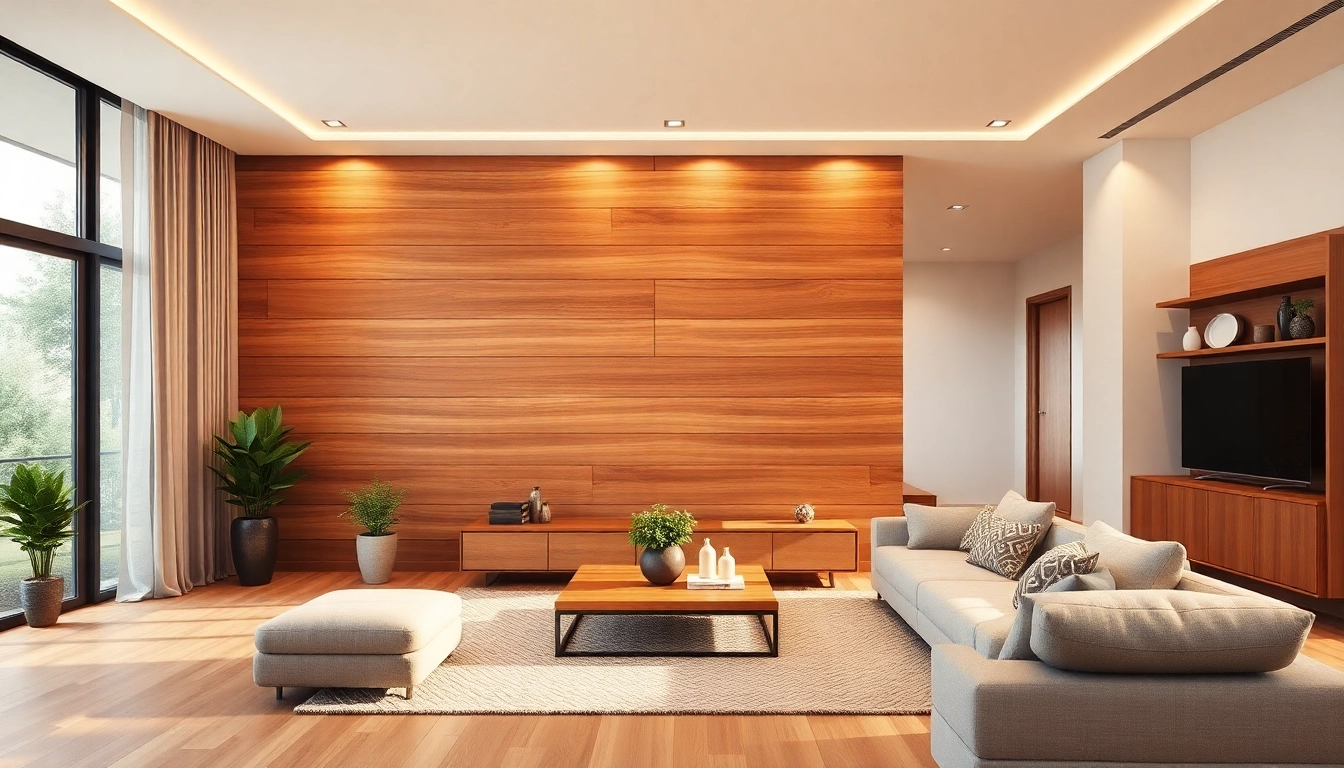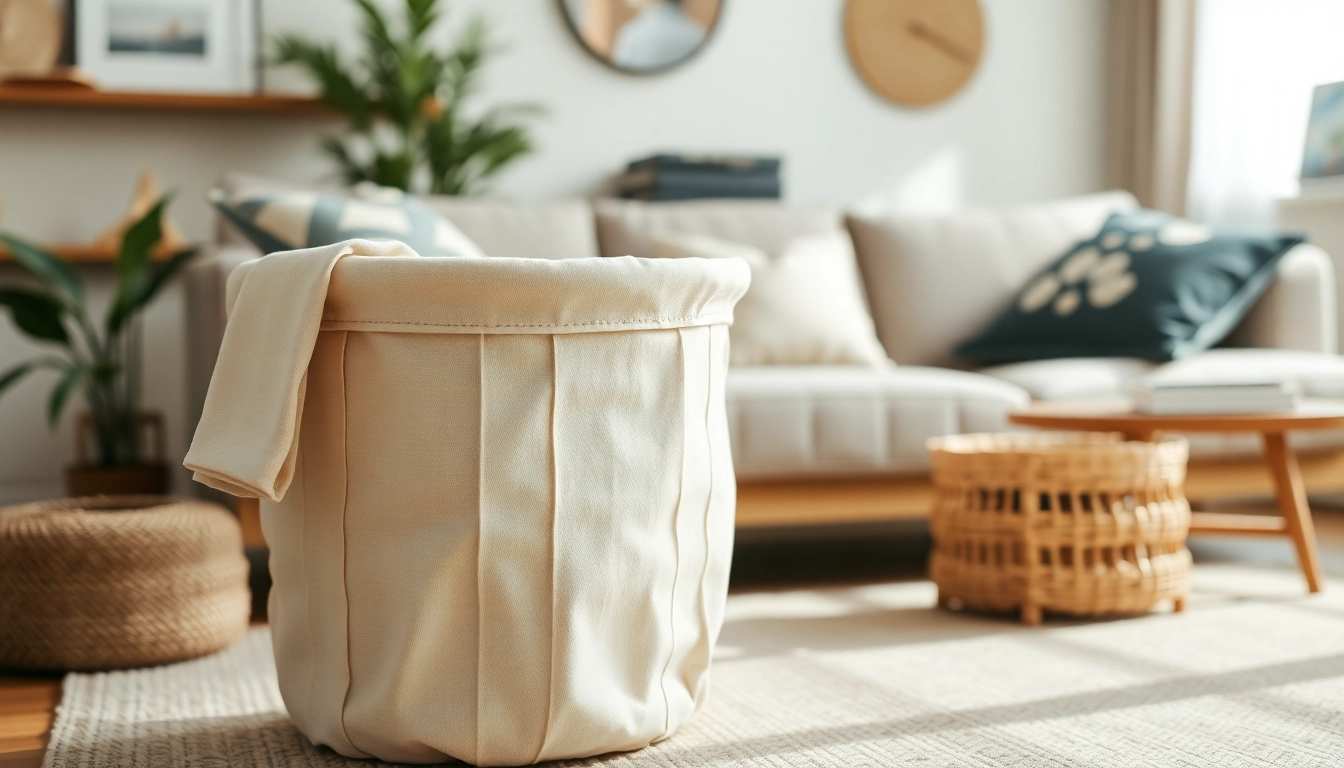Understanding Slats Wall Panels
What are Slats Wall Panels?
Slats wall panels have emerged as a significant trend in interior design, providing not only aesthetic appeal but also functional benefits for various spaces within the home or office. These panels consist of elongated wooden slats, arranged in a parallel formation, which can vary in spacing, width, and thickness. The primary purpose of slats wall panels is to create a stylish, contemporary look while also serving as sound insulation and improving acoustics in a room. Their design can easily adapt to various styles, ranging from modern minimalism to rustic charm, making them a versatile choice for many homeowners and interior designers alike.
Benefits of Slats Wall Panels in Interior Design
Incorporating slats wall panels into your interior design offers a myriad of benefits, which can enhance not only the look but also the functionality of a space. Some of the notable benefits include:
- Aesthetic Appeal: Slats wall panels bring a unique texture and depth to walls, making them a focal point in any room.
- Acoustic Benefits: The gaps between the slats allow for sound absorption, which can minimize echoes and enhance the acoustics of spaces such as home theaters or recording studios.
- Easy Installation: Many wood wall panels are designed for straightforward installation, allowing homeowners to undertake DIY projects with minimal effort.
- Durability: Constructed from quality wood material, slats wall panels are designed to stand the test of time, requiring less frequent replacement than other wall treatments.
- Eco-Friendly Options: Sustainably sourced wood can be an eco-conscious choice, adding to the growing trend towards green building practices.
Materials Used for Slats Wall Panels
Slats wall panels can be constructed from a variety of materials, each offering distinctive characteristics and looks. Common materials include:
- Solid Wood: Provides a warm, natural appearance and is available in various species such as oak, maple, cherry, and walnut.
- Plywood: A more affordable option, it can replicate the look of solid wood while being lightweight and versatile.
- Medium Density Fiberboard (MDF): Often used for painted finishes, MDF provides a smooth surface and can be made to resemble various wood grains.
- Engineered Wood: Combines different layers of wood for stability and resistance against warping, making it suitable for dynamic environments.
Choosing the Right Slats Wall Panels
Factors to Consider When Selecting Slats Wall Panels
Selecting the right slats wall panels requires careful consideration of various factors that align with your project needs and aesthetic preferences. Key considerations include:
- Purpose: Determine if the panels will be purely decorative or if they need to provide acoustic benefits or insulation.
- Style: Choose slats that complement the overall design theme of your space, whether it be modern, traditional, or eclectic.
- Installation Method: Understand the installation requirements and choose panels that suit your skill level, especially if you plan to install them yourself.
- Budget: Materials and designs can vary greatly in price; set a clear budget before selecting your wall panels to avoid overspending.
Color and Finish Options for Slats Wall Panels
The color and finish of slats wall panels can drastically influence the ambiance of a room. Here are several options to consider:
- Natural Finishes: Allowing wood’s natural grain and color to shine, these finishes enhance beauty without overwhelming the space.
- Stains: Wood stains come in various colors, allowing homeowners to customize the tone of their slats to coordinate with other furnishings.
- Paint: For a more modern touch, slats can be painted in bold or muted tones, offering endless color possibilities to match any palette.
- Textured Finishes: Some panels come with unique textures like brushed, smoothed, or distressed finishes, enhancing tactile and visual interest.
How to Match Slats Wall Panels with Your Decor
Effectively integrating slats wall panels into your decor requires some thought to ensure cohesion and balance. Here’s how to achieve this:
- Consider Color Schemes: Match the panel’s color with your existing furniture or wall colors, or use contrasting tones for a striking effect.
- Coordinate Materials: If your room features metal accents, consider choosing slats that complement these elements to create harmony.
- Keep Scale in Mind: The scale of your slats should be proportional to the size of the room. Larger slats may overwhelm a small space, while smaller slats could look insignificant in a large room.
- Incorporate Accessories: Use other design elements such as artwork, lighting, and decor that echo the lines of slats to curate a cohesive look.
Installation Process for Slats Wall Panels
Tools Needed for Slats Wall Panels Installation
Before embarking on the installation of slats wall panels, gathering the right tools is crucial for a successful project. Essential tools include:
- Measuring tape
- Level
- Stud finder
- Drill and drill bits
- Saw (circular or miter saw depending on preferences)
- Screwdriver
- Pencil or chalk for marking
- Adhesive (if applicable)
- Safety gear (gloves, goggles)
Step-by-Step Guide to Installing Slats Wall Panels
Here’s a straightforward guide to installing slats wall panels:
- Preparation: Clear the wall of any obstructions and ensure it is clean and dry.
- Measure and Mark: Use a measuring tape and level to find the desired height for your panels, marking reference lines on the wall.
- Locate Studs: Use a stud finder to locate the wall studs where you will secure the panels for added stability.
- Cut Panels: If necessary, cut your slats to the required lengths using a saw.
- Start Installing: Begin at the bottom, securing each panel to the wall with screws or adhesive, ensuring they are level.
- Continue Layering: Work your way up, maintaining consistent spacing between the slats throughout the installation.
- Final Touches: Once installed, check all panels for level and secure any loose ends. Clean any excess adhesive if used.
Common Mistakes to Avoid During Installation
Even with careful planning, some common mistakes can occur during installation of slats wall panels. Here are a few pitfalls to avoid:
- Skipping Measurements: Accurate measurements are key; always double-check before cutting or installing panels.
- Not Using a Level: Failing to use a level can result in crooked panels, leading to an unprofessional appearance.
- Ignoring Wall Conditions: Ensure your wall is flat and even; repairs may be needed if there are holes or imperfections.
- Neglecting Spacing: Consistent spacing is crucial; use spacers to maintain uniformity across panels.
Caring for Slats Wall Panels
Cleaning Techniques for Slats Wall Panels
Proper maintenance is essential to preserve the beauty and integrity of slats wall panels. Cleaning techniques include:
- Dust Regularly: Use a microfiber cloth or duster to remove dust and debris from the surface of the panels.
- Gentle Cleaners: For deeper cleaning, mix a solution of mild dish soap and warm water; apply with a soft cloth and avoid excessive moisture.
- Avoid Abrasives: Steer clear from harsh chemicals or abrasive tools that may scratch or damage the wood finish.
Preventing Damage to Slats Wall Panels
To extend the lifespan of your slats wall panels, consider the following prevention techniques:
- Maintain Optimal Humidity: Wood can warp under extreme humidity; use a dehumidifier or humidifier to maintain balance.
- Avoid Direct Sunlight: Protect panels from prolonged exposure to direct sunlight, which can fade the wood’s color over time.
- Use Coasters and Mats: Be mindful of hot or wet items placed against the panels to prevent warping or staining.
When to Refinish or Replace Slats Wall Panels
Recognizing when slats wall panels need attention is essential for maintenance. Signs that indicate refinishing or replacement include:
- Visible Wear: When scratches, chips, or dents are prominently visible.
- Fading Color: A significant change in hue may indicate a need for refinishing.
- Structural Issues: If the slats are warped or loosened from their backing, replacement may be necessary.
Trends in Slats Wall Panel Design
Current Trends in Slats Wall Panels for Modern Homes
As design evolves, so do the trends surrounding slats wall panels. Current trends include:
- Geometric Patterns: Creative arrangements often use slats to form unique geometric patterns that add intrigue and style.
- Mixed Materials: Combining wood with metal or acrylic elements enhances contemporary spaces and introduces a dynamic texture.
- Eco-Friendly Choices: The rise of sustainable materials drives demand for ethically sourced wood and eco-conscious finishes.
Innovative Uses of Slats Wall Panels in Various Spaces
Rather than traditional wall applications, slats wall panels are being creatively utilized in diverse situations, such as:
- Room Dividers: Slats can serve as functional dividers, creating distinct areas within open layouts without obstructing light.
- Ceiling Features: Turning slats vertically or across the ceiling introduces an unexpected design twist, enhancing visual interest.
- Accent Furniture: Slats can be integrated into furniture pieces, such as shelving units or cabinets, to maintain cohesive design elements.
Future Outlook for Slats Wall Panels in Interior Design
The future of slats wall panels in interior design appears bright, as they continue to blend functionality with aesthetic considerations. As sustainable design becomes more prevalent, the use of responsibly sourced materials will likely rise, enhancing their appeal among consumers. Furthermore, the versatility of slats wall panels implies they can continue to adapt to changing architectural trends and personal style preferences, solidifying their place as a staple in modern design.



